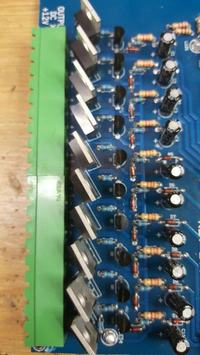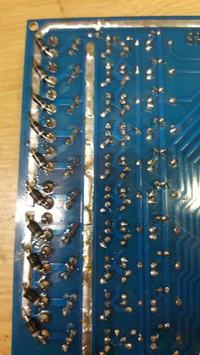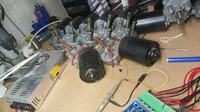Gary_SMi
Junior Member level 1
Hello,
Attached describing part of a 10 channel mosfet motor drive circuit. It seems that channels are failing from time to time, either the bjt or the fets are failing either permanently ON or permanently OFF. Have recently added the schottky diodes in an attempt to rectify the problem. Can anyone spot somewhere else in the circuit that could be contributing to this problem? Thanks in advance.

Attached describing part of a 10 channel mosfet motor drive circuit. It seems that channels are failing from time to time, either the bjt or the fets are failing either permanently ON or permanently OFF. Have recently added the schottky diodes in an attempt to rectify the problem. Can anyone spot somewhere else in the circuit that could be contributing to this problem? Thanks in advance.



